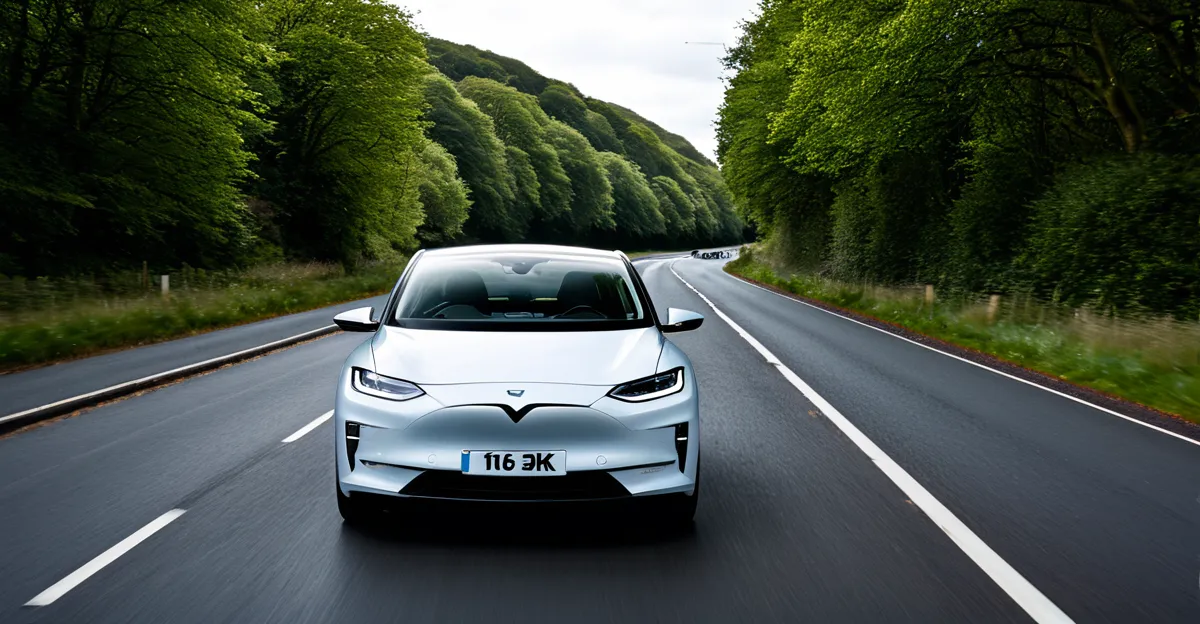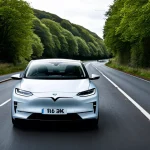Increase in Electric Vehicle Adoption and Its Immediate Impacts
The electric vehicle adoption UK landscape has witnessed remarkable growth in recent years. EV statistics reveal a sharp rise in registrations, with annual growth rates exceeding previous projections. This surge reflects shifting consumer preferences favoring sustainable mobility, propelled by increased environmental awareness and improving EV affordability.
Market trends indicate that electric vehicles now hold a significant share of new car sales, steadily encroaching on traditional combustion engine vehicles. Consumers are drawn by incentives, lower running costs, and technological advancements, reinforcing this steady climb in EV adoption. However, this shift does present transition challenges, particularly for dealerships and service providers accustomed to petrol and diesel models.
In the same genre : What impact does the used car market have on the UK automotive industry?
Traditional vehicle sales have correspondingly declined, prompting automakers to diversify portfolios and accelerate EV development. Despite growing demand for EVs, barriers such as upfront costs and charging access persist, influencing consumer decisions. Understanding these dynamics allows policymakers and businesses to tailor support strategies effectively, ensuring sustained growth in electric vehicle adoption UK while addressing lingering transition hurdles.
Transformations to UK Road Infrastructure
The rapid rise in electric vehicle adoption UK necessitates significant changes in the country’s road infrastructure. To support an increasing number of EVs, the EV infrastructure UK is expanding rapidly, focusing on both public and private charging stations. This expansion includes upgrades to motorway service areas, where fast-charging facilities are being installed, enabling longer journeys without range anxiety. Urban roads are also being adapted, with curbside charging points becoming more prevalent in cities to accommodate residents who lack off-street parking.
Also read : How are UK car manufacturers improving sustainability through AI?
Investment in grid capacity is critical amid this growth. The increased electricity demand from EV charging requires enhancements in power distribution networks to prevent overloads. Authorities and utility companies are collaborating to upgrade transformers and integrate smart grid technologies, ensuring a reliable and efficient supply.
Strategic planning targets seamless integration between roads and EV infrastructure UK, minimizing disruptions while promoting convenient access. These efforts are vital to sustain the momentum in electric vehicle adoption UK and address the infrastructure challenges that could otherwise impede progress.
Environmental Effects and Traffic Pattern Changes
The surge in electric vehicle adoption UK is delivering tangible environmental benefits. EVs produce zero tailpipe emissions, contributing significantly to improved air quality UK. Recent studies show notable declines in nitrogen oxides and particulate matter concentrations in cities with high EV usage. This reduction aids public health by lowering respiratory issues linked to pollution.
Furthermore, EVs contribute to decreased noise pollution in urban areas. Unlike combustion engines, electric motors operate quietly, making city streets more pleasant and reducing stress for residents. This characteristic also improves conditions for pedestrians and cyclists.
Changes in traffic patterns have emerged due to EV charging habits. Unlike refuelling at petrol stations, many EV owners charge vehicles at home overnight, shifting demand away from traditional fuel stops. Public charging hubs see peak use during daytime and early evening, subtly altering traffic flows. These shifts require local authorities to monitor and manage congestion differently, emphasizing a need for adaptive transport planning.
Together, these developments underscore how electric vehicle adoption UK influences not only the environment but also daily traffic dynamics, necessitating ongoing attention from policymakers and planners.
Government Policy and Legislative Developments
Government action is pivotal in shaping the trajectory of electric vehicle adoption UK. The UK EV policy framework combines national and local strategies to accelerate transition. Key instruments include financial incentives such as grants and tax reliefs, which lower upfront costs—a frequent barrier for consumers noted in EV statistics. These incentives have demonstrably increased adoption rates by making EVs more affordable and appealing.
Local governments deploy low emission zone policies to restrict high-pollution vehicles in urban areas, encouraging uptake of electric models. These zones often coincide with enhanced EV infrastructure UK, linking legislation with practical support on the ground. The interaction of policy measures and infrastructure expansion creates a reinforcing cycle positively impacting consumer confidence and market trends.
Ongoing legislative efforts aim to tighten emission standards and phase out petrol and diesel vehicles by definite deadlines. This regulatory push provides clarity and direction for manufacturers and consumers alike. Proposed changes include stricter building codes requiring new developments to include EV charging points, integrating infrastructure into the urban fabric.
Combined, these government initiatives reduce adoption barriers and set clear market signals. Understanding this evolving UK EV policy landscape helps stakeholders anticipate shifts and capitalise on emerging opportunities in the growing electric vehicle sector.
Economic and Societal Implications of Widespread EV Use
The electric vehicle adoption UK trend is reshaping the national economy and society at large. EV economic impact UK extends beyond consumer savings, influencing job creation and industry evolution. As electric vehicles gain market share, demand for new skills in battery technology, software development, and EV maintenance surges. This shift fosters growth in emerging sectors, supporting green jobs and innovation.
Traditional automotive roles are transforming, reflecting changes in manufacturing and service needs. For example, EVs require fewer mechanical repairs but more specialized electrical expertise. Energy sector roles are also evolving due to increased electricity demand and integration of renewable sources, highlighting cross-industry collaboration.
Societal changes include improved accessibility to clean transport. However, equity remains a challenge. Ensuring affordable options and widespread EV infrastructure UK helps reduce disparities, enabling broader participation in the green transition. Policymakers focus on programs assisting lower-income groups to adopt EVs, aiming for inclusive benefits.
In summary, widespread EV adoption impacts employment, industry structure, and social inclusivity. Recognising these factors is essential for harnessing the full potential of the electric vehicle revolution in the UK.








